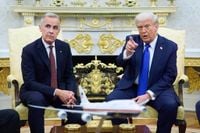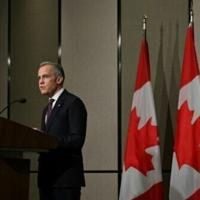When the U.S. Supreme Court convenes this week, the stakes will be high—not just for American trade policy, but for the future of Canada-U.S. relations and the global economic order. At the heart of the debate: President Donald Trump’s sweeping use of tariffs, wielded not just as an economic lever but as a blunt instrument of foreign policy. The arguments, set for November 5, 2025, will test the limits of presidential power and could reshape how the United States—and by extension, its closest neighbors—navigate the choppy waters of international trade.
Trump’s reliance on tariffs is no secret. According to the Associated Press, he’s used them as his “favorite foreign policy tool,” imposing import taxes to pressure adversaries, secure ceasefires, and even as retribution for perceived political slights. Whether it’s a dispute with Brazil over judicial prosecutions or a spat with Canada fueled by a television ad, tariffs have become the go-to weapon in Trump’s diplomatic arsenal.
The legal question before the Supreme Court centers on the International Emergency Economic Powers Act (IEEPA) of 1977. Trump has invoked this law to justify tariffs on a broad range of countries, arguing that it grants him the authority to act swiftly in the face of national emergencies. But lower courts, including the U.S. Court of Appeals for the Federal Circuit, have pushed back, finding that the Constitution gives Congress—not the president—the power to set tariffs. Still, as the AP notes, the tariffs remain in effect while the Supreme Court weighs the issue.
In a statement, White House spokesman Kush Desai defended Trump’s actions: “The fact of the matter is that President Trump has acted lawfully by using the tariff powers granted to him by Congress in IEEPA to deal with national emergencies and to safeguard our national security and economy. We look forward to ultimate victory on this matter with the Supreme Court.” Trump himself has described the case as “one of the most important in U.S. history,” warning that a ruling against him would be a “disaster” for the country.
But the implications stretch far beyond Washington. For Canada, Trump’s tariffs have already exacted a heavy toll. As reported by UNN and the AFP, key industries like autos, aluminum, and steel have been hammered, driving up unemployment and squeezing businesses. Even with a North American trade deal in place—one that exempts about 85 percent of cross-border commerce from tariffs—certain sectors have been hit with punishing duties: 50 percent on steel and aluminum, 25 percent on automobiles, and a general 35 percent tariff on Canadian goods, though most are exempt under the trade agreement.
The current Supreme Court case won’t change everything for Canada. As CP points out, Trump’s use of tariffs under Section 232 of the Trade Expansion Act of 1962—targeting steel, aluminum, automobiles, lumber, and copper—remains untouched by the IEEPA challenge. In other words, even if Trump loses at the Supreme Court, Canadian exporters may not see immediate relief.
Recent events have only heightened tensions. Last week, Canadian Prime Minister Mark Carney found himself in the diplomatic hot seat after Ontario aired an anti-tariff advertisement during the World Series between the Toronto Blue Jays and the Los Angeles Dodgers. The ad, which quoted former U.S. President Ronald Reagan warning that “such trade barriers hurt every American worker and consumer,” drew Trump’s ire. According to BBC and UNN, Trump suspended trade talks and threatened an additional 10 percent tariff on Canadian imports, accusing Canada of trying to interfere with the Supreme Court case.
Carney, who only entered politics in January after a career as a central banker, apologized to Trump at the Asia-Pacific Economic Cooperation summit in South Korea. “I apologized to the president,” Carney told reporters, admitting that the ad “would not be something I would have done” and acknowledging that Trump was “offended” by it. Trump, for his part, confirmed that Carney had apologized and said the two maintained a “very good” relationship—though he added, “what he did was wrong.”
Ontario Premier Doug Ford, responsible for the ad, claimed it garnered “one billion views” and attention from as far away as the UK and India. Carney said Ford had shown him the clip beforehand, and he had advised against airing it, but the province went ahead anyway. The controversy underscores just how sensitive U.S.-Canada trade relations have become under Trump’s tariff regime.
As Canada’s new Liberal government prepares to unveil its first budget, the challenges posed by Trump’s trade policies loom large. In a recent speech at the University of Ottawa, Carney warned, “Our relationship with the United States will never be the same as it was.” He’s called for “bold risks” and “swinging for the fences” to address what he describes as a “rupture” in economic ties. The upcoming budget, according to AFP, will feature major increases in defense spending to meet NATO targets and investments in national projects aimed at economic sovereignty—ranging from port expansion to energy production and critical mineral extraction infrastructure.
Carney’s government, which lacks a parliamentary majority, faces a tough road in getting its budget passed. University of Ottawa public policy expert Genevieve Tellier told AFP she expects the deficit to be “very large”—possibly around CAN$100 billion ($71 billion). The budget is a confidence vote, and its defeat could trigger fresh elections, though Tellier sees little chance of the government falling over the issue. “They are just three votes short of a majority, and the government is still popular,” she noted.
Meanwhile, Carney’s critics hammer him for failing to secure a tariff-easing trade deal with the U.S. Trump’s suspension of talks after the Ontario ad has only added fuel to the fire. Still, Carney has reminded Canadians that the current trade deal keeps most commerce tariff-free and has expressed willingness to restart negotiations whenever Trump is ready.
For Trump, tariffs are more than just a negotiating tactic—they’re the backbone of his foreign policy. As Josh Lipsky of the Atlantic Council told the AP, “Presidents have typically treated tariffs as a scalpel, not a sledgehammer.” But Trump’s approach is different: “All of it is interconnected and tariffs are at the heart of it.” The European Union, for example, settled for a 15 percent tariff on imports—up from 1.2 percent before Trump took office—to secure U.S. support for NATO and Ukraine. The move drew criticism from European businesses and member states, but EU Trade Commissioner Maroš Šefčovič defended it as necessary for security and Ukraine.
Emily Kilcrease, a former U.S. trade official now at the Center for a New American Security, told the AP that Trump’s use of tariffs represents “just broadscale attack on an economy as a way to incentivize a foreign government to change their posture.” Still, she believes the Supreme Court could side with Trump, given IEEPA’s “broad, flexible emergency powers.” Even if the Court rules against him, tariffs “certainly don’t go off the table. It just makes them a little bit slower.”
As the Supreme Court prepares to weigh in, governments, businesses, and ordinary citizens on both sides of the border are watching closely. The outcome could redefine not only the reach of presidential power but the very nature of North American trade for years to come.






